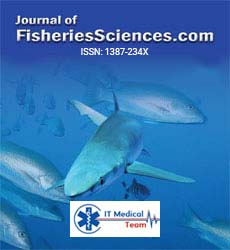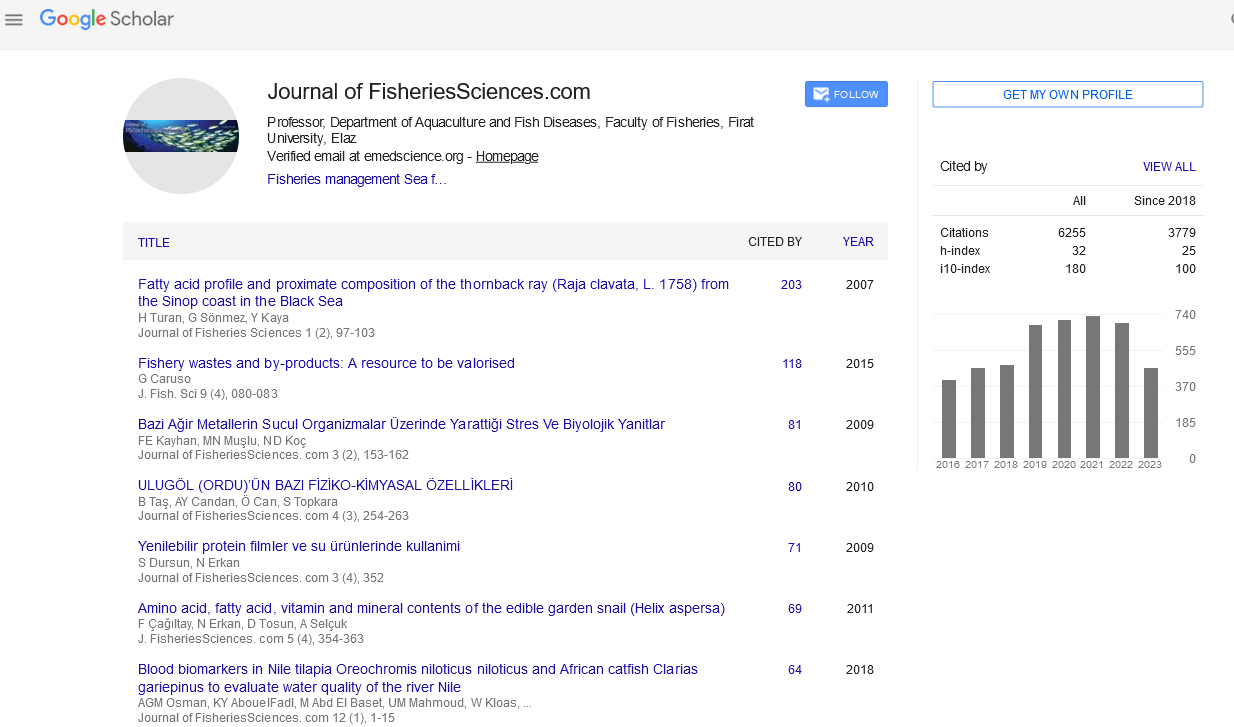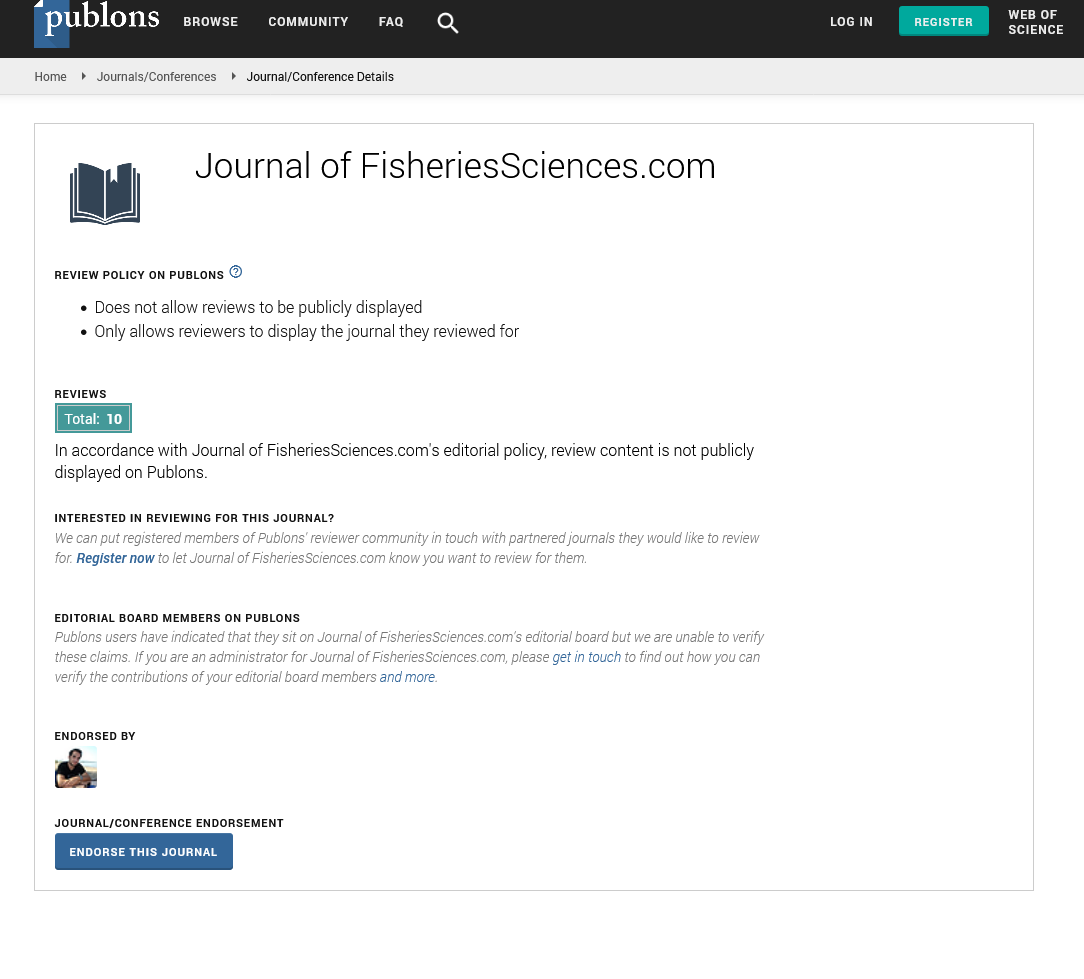Abstract
Jatropha curcas seed cake was processed using different methods of detoxification treatments (Hexane extraction + 95% ethanol extraction+ Autoclaving; 2% sodium hydroxide; 92% ethanol extraction + Autoclaving; 2% sodium hydroxide + days fermentation).the proximate composition and antinutrient of the untreated and treated Jatropha curcas cake were determined. The crude protein (CP) content of the untreated Jatropha curcas cake was 10.12±0.012g/100g while (Ethanol + Autoclaving) showed reduction of 8.16±0.02g/100g (Hex+Autoclaving+Ethanol); (2% NaOH) and (NaOH+ fermentation) showed increased in protein contents of 10.16±0.01g/100g, 12.62±0.02g/100g, 12.81±0.01g/100g respectively. Lipid content were 9.15±0.02g/100g, 5.81±0.01g/100g, 4.13±0.01g/100g, 3.14±0.01g/100g, 3.72±0.02g/100g, 3.67±0,02g/100g (Control; Ethanol+Auclaving; Hex+Autoclaving+Ethanol; NaOH; NaOH+fermentation) respectively. The antinutrient values were reduced more in the solvent treatments than the chemical treatment with Ethanol+Autoclaving causing the highest reduction in antinutrient levels compared to other treatments.
Keywords
Supplement; Catfish (Clarias garieinus); Jatropha curcas
Introduction
Aquaculture is an important weapon in the global fight against
malnutrition and poverty, particularly in the developing countries
[1]. Increase in human population in these countries, along with
changing perceptions of healthy food in affluent regions, are set
to increase the demand for food fish. Aquaculture production
seems to be responding to the increased fish demand and have
exclusively increase the world fish production by 20 million tones.
In addition to being the fastest growing food production sector of
the world aquaculture activities currently employ about 9 million people (FAO 2000).
Feeding is the most important task in the intensive pond production
of catfish [2], their feeding behavior can be an important clue to
general health and to other conditions in the pond. Nigeria been
in the fish farming, the quest to make it interesting by using low
cost feed with adequate qualities of nutritional balanced content
and available in our environment will be of great improvement
to farmers. Even when the natural feed forms the main source of
nutrition, supplemental feeding with artificial feed is necessary to
obtain increased production in pond.
Fish meal is a favorite source of the high protein in fish feed. There are essential amino acids and fatty acids that are present in fish
meal but not present in tissue from plant or other animals. The
proportion of global fishmeal production used for fish feeds has
increase from 10 to 35% in the last fifteen years (Hardy, 2000).
The cost of this fish meal has been a problem even in industrially
advanced countries, so considerable research is now underway
to find suitable substitute in order to formulate cheaper and
highly nutritious feeds (Hardy, 2000). Hence the need to look
at new possible aqua-feed ingredients of the required high
nutritional quality is therefore imperative. High cost, increasing
demand and uncertain availability of fishmeal plus risk factors
associated with disease from animal protein sources resulted in
nutritionist studying alternative sources for inclusive into the of
fresh water and marine species. Coupling with remedial measures
for other problems where international attention is focused,
multifunctional plant that requires low input and are capable
of surviving under poor soil conditions offer viable solution to
multiple problems [3].
Fish feed have been developed in some countries notably USA,
Japan and Sweden for catfish, salmon fish, eel, carps, and shrimp.
In most case the formulations are proprietary secretes and
too expensive for use in developing countries. The high cost of
some feed ingredients like fish meal has been a problem even
in industrially advance countries and so considerable research is
now underway in to find suitable substitute order to formulate
cheaper and highly nutritious feeds.
Although there has been a lot of research work on the production
of fish feed to meet the nutrient requirement for cultivable fish
in Nigeria. Good quality fish feed pellets are sparingly used by
fish farmers. Protein form the bulk of fish feed ingredients, as
fish culture principally is to produce quality fish food for human
consumption. Any management techniques that will reduce the
cost of production will result to increase in profit. It can serve as
employment opportunities for thousands of people directly or in
directly.
Therefore it is necessary to investigate a combination of available
ingredient within the locality to produce fish feed of low cost that
can meet the nutrient requirements of fish. Plant species promoted
internationally for multiple purpose include Jatropha curcas,
Moringa oleifera, Mucuna pruriens, Leucaena leucocephala,
Sesbania aculeate, Sesbinia bispinosa and Stylosanthies hamata
to name a few. These plants are capable of resisting adverse
soil and climatic conditions and still sustain a reasonably high
primary and secondary production. Research reports available on
some of them indicate the potential to develop products of high
nutritional quality [3]. These products however, also contain high
levels of antinutritional, toxic principle that keep herbivores at
bay. Utilization of these plants as animals and fish feeds would
therefore not only depend on their nutritional content, but also
on the presence and levels of detoxification. A challenge for
tropical aquaculture research is therefore to identify products
from these plants having the required nutritionally quality and
development via treatment method to make them suitable for
addition to fish feeds [3].
Jatropha curcas is a valuable multi-purpose crop that alleviates
soil degradation, desertification, and Jatropha is a highly
adaptable species. Its strength as a crop comes from its ability
to grow on very poor, dry soil. It is recommended, from an
economic standpoint, to be cultivated in marginal lands. Jatropha
oil is inedible and its cake is very rich source of protein and its
price is not distorted by competing food uses. Apart from other
applications and potential uses of Jatropha-medicinal, animal
feed, and soap. No local market for Jatropha was identified.
The seed cake has 58-60 % crude protein (53-55 % true protein
content) and the level of essential amino acids except lysine is
higher than the FAO reference protein. However, this seed cake
has been found to be highly toxic to fish and rats. The toxic
principles have been identified as phorbol esters and other antinutrients,
Feeding studies on rats and fish established that the
seed meal prepared from seeds collected from a wild variety of
Jatropha curcas which originated from Mexico is non-toxic. The
protein, energy, lipid and amino acid contents in the seeds of
the non-toxic provenance are similar to those of toxic varieties.
Phytate constitutes a major single anti-nutritive component of
Jatropha meals which is not heat labile and can have adverse effects, whereas other anti-nutritional factors like trypsin inhibitors and lectin can be destroyed by heat treatment [4]. This
work if successfully completed will provide suitable substitute
for conventional feed which is likely to be cheaper and highly
nutritious for the production of catfish and thus solving the
problem of malnutrition in the country. It can also provide job
opportunity.
Materials and Method
Experimental Design (Figure 1).

Figure 1: Experimental Design.
Group of Experimental Animal
1. Coppen (control feed)
2. 5% (Hexane extraction+ Autoclaving +Ethanol extraction
treatment) supplemented diet
3. 5% (2% NaoH + Autoclaving treatment) supplemented diet
4. 5% (92% Ethanol + Autoclaving treatment) supplemented diet
5. 5% (2% NaoH + Autoclaving treatment +4days Fermentation
treatment) supplemented diet
6. 10% (Hexane extraction+ Autoclaving +Ethanol extraction
treatment) supplemented diet
7. 10% (2% NaoH + Autoclaving treatment) supplemented diet
8. 10% (92% Ethanol + Autoclaving treatment) supplemented diet
9. 10% (2% NaoH + Autoclaving treatment + 4days Fermentation
treatment) supplemented diet
10. 20% (Hexane extraction+ Autoclaving +Ethanol extraction
treatment) supplemented diet
11. 20% (2% NaoH + Autoclaving treatment) supplemented diet
12. 20% (92% Ethanol + Autoclaving treatment) supplemented
diet
13. 20% (2% NaoH + Autoclaving treatment +4days Fermentation
treatment) supplemented diet
Materials
• 250 fingerlings of Clarias garepinus (MSB fisheries Ltd)
• Jatropha curcas cake meal [NARICT Bassawa, Zaria]
Methodology
Detoxification of jatropha curcas
Detoxification of jatropha curcas
Detoxification of jatropha curcas
Detoxification of jatropha curcas
Formulation of the Supplemented Diets
950g of coppens + 50g of detoxified Jatropha curcas cake
=====5% feed supplement diet
900g of coppens + 100g of detoxified Jatropha curcas cake
=====10% feed supplement diet
800g of coppens + 200g of detoxified Jatropha curcas cake
=====20% feed supplement diet
These were mixed properly pelletized using meat grinder and
packed in transparent cellophane bag
Reaging of Fish
Fish were obtained from MSB fisheries Ltd. Acclimatized for 14
days in a circular plastic bowl of 100litres capacity and all fed
coppens (control feed) at 5% body weight of the whole fish
weight. After acclimatization period (14days), fish were divided
into thirteen (13) groups each in 50litres jerry-can that was cut
open at the top and properly labeled. Filled with 45 litres of water
which was allowed to stand for 24 hours in order to allow for
dechlorination. Each jerry can contain 20 post fingerlings. The pH
and temperature were monitored throughout the feeding trials.
The fish were fed 5%`10% and 20% supplemented diets, each of
the four (4) processed Jatropha curcas cake for fifty-six(56) days.
Their weights in each group were taken in triplicate biweekly.
Feeding was done manually by hand twice each day at 5% weight
of the fish. Fish were sacrifices and oil quality determined
Monitoring of Growth Indices in Fish
Fish growth is measured in terms of weight gain .Hence a balanced
diet that meets fish nutritionally requirement is essential at all
time. This was recorded every two [2] weeks.
Statistical Analysis
Data obtained were analyzed by analysis of variance [ANOVA]
and student t-test at 95% confidence level [P=0.05]
Proximate analysis of detoxified jatropha curcas
cake and supplemented diets
Determination of lipid content (a.o.a.c.1980)
Principle: This is the continuous extraction of fat content from the
simple using suitable solvent e.g. petroleum either in a soxhlet
extractor. In this principle, non-polar components of the sample
are easily extracted into the organic solvent, ether.
Determination of crude fiber (a.o.a.c.1980)
Principle: This involves sequential digestion of the sample with
dilute acid and alkali solutions. The residue obtained was ignited
to obtain crude fiber.
Determination of crude protein kjeldahl method
(a.o.a.c.1980)
Principle: The principle of this method is to digest the organic
matter with sulphuric acid in the presence of a catalyst, render the
reaction alkaline, then distil and titrate the liberated ammonia.
The Determination of Moisture Content
(a.o.a.c.1980)
Principle: The method employed the determination of moisture
in the sample is the measurement of the loss in weight due to
drying at a temperature of about 105 0Clarias A watch glass was washed and dried in an oven at 105 0c ;it was cooled and weighed empty.
Ash Content Determinatio (a.o.a.c.1980)
Principle: the term ash refers to the residue left after combustion
of the oven dried sample and is a measured of the total mineral content
Determination of Carbohydrate
The total of protein, moisture content, ash content and lipid
content subtracted from 100 gives the carbohydrate, and this is
referred to as estimation by difference (PEARSON, 1976)
Determination of Antinutrient in Detoxified
Jatropha Curcas Cake
Determination of trypsin inhibitor (ti) (on wuke, 2005)
Determination of total phenolics (tannins) (shahide and naczk
1989)
Determination of lectin using purification by affinity
chromatography (felsted et al 1975)
Results
Figures 2-6.

Figure 2: Show the graph of growth rate of Clarias garepinus on 5% diet for eight weeks. 0-2weeks control had the highest growth followed
by (Eth+Autocl) then (Hex+Autocl+Etha), (NaOH+Autocl) and (NaOH+Autocl+Ferm) having the lowest. Week 2-4 (Etha+Autocl) still
had highest growth followed by (Hex+Autocl+Etha), (NaOH+Autocl+Ferm) and (NaOH+Autocl) both having lowest. Week 4-6 all
lower compare to control but (Etha+Autocl) highest in growth rate followed by (NaOH+Autocl+Ferm) then (Hex+Autocl+Etha) and
(NaOH+Autocl) having the lowest.

Figure 3: Comparism of growth rate for 10% supplemented diets on clarias garepinus (shows the graph of growth rate of Clarias garepinus on
10% diet. At weeks 0-2 all showed increased in weight except (NaOH+Autocl) that had decrease in weight. Weeks2-4 Control had the
highest followed by (Hex+Autocl+Etha) then (Etha+Autocl) and (NaOH+Autocl+Ferm),while (NaOH+Autocl) on 10% all died at the
end of weeks 2-4.in weeks 4-6 control still the highest followed by (Etha+Autocl) then (NaOH+Autocl+Ferm) and (Hex+Autocl+Etha)
having the lowest. A wider margin in weight was observed in the control compare to all the treatments,followed by (Etha+Autocl)
then (NaOH+Autocl+Ferm) and (Hex+Autocl+Etha) having the lowest).

Figure 4: Comparism shows the graph of growth rate of Clarias garepinus on 20% diet control had the highest for weeks 0-2 followed
by (NaOH+Autocl) then (Hex+Autocl+Etha) (NaOH+Autocl +Ferm) and (Etha+Autocl) with the lowestIrrespective of the various
treatments all the fish died at end of weeks 0-2.

Figure 5: Shows the chart of comparism total growth rate of Clarias garepinus on 5% diet at weeks 8. Control had the highest followed by
(Etha+Autocl) then (NaOH+Autocl+Ferm) , (Hex+Autocl+Etha) and ( NaOH+Autocl) with the lowest growth rate.

Figure 6: Show the chart of comparisonof the total growth rate of Clarias garepinus on 10% dietat 8 weeks Control had the highest followed
by (Etha+Autocl) then (NaOH+Autocl+Ferm) and (Hex+Autocl+Etha) having thelowest value.
Discussions
The protein content of the solvent treatment shows no significant
difference from the untreated Jaropha curcas seed cake whereas
the sodium hydroxide treatment and the pro- fermentation
sodium hydroxide treatment shows increment in its value these
could be due to the release of some bounded protein by the
NaOH treatment employed.
Substantial amount of total phenolics, lectins and trypsin
inhibitors have been reported in Jatropha curcas by Makkar and
Becker 2001 this agrees with their detection in this experiment,
all treatment used in detoxification shows significant difference
from the untreated Jatropha curcas seed cake. Monogastric and
other warm blooded animals are known to be adversely affected by the high proportion of phenolics substance present in feeds by reduction of feed intake, growth and nutrient availability and
increase in endogenous loses of nitrogen through feaces. Also
observed significant growth reduction in fish fed diets containing
low level of total phenolics. The level in various supplemented
diets may have negatively affected the growth paraments of fish
fed such diets in this experiment. The slight reduction of the
concentration of phenolics in treated Jatropha curcas seed cake
may have contributed to the poor growth.
Lectin of the various treatments shows reduction from the
untreated Jatropha curcas seed cake but then there was
significant difference between the solvent extraction and the
sodium hydroxide extraction treatments. Photoheamagglutinin
in nut and legumes are considered as potential antinutrients and
are known to decrease growth performance of animals. Many fish
species have been reported to be sensitive to trypsin inhibitors.
Similarly, and found that fish are sensitive to protease inhibitors.
In this experiment although trypsin inhibitors were reduced
respectively by all the treatments, the significantly reduced
growth performance in Clarias garepinus fingerlings fed diets
implies that residual trypsin inhibitors and lectins in the various
treatments may have led to the poor performance. Related
works on Jatropha curcas also reported the presence of other
antinutrients such as phytates, saponins, these antinutritional
factors which are mostly thermalstable may have contributed
to the poor growth performances experienced in fish fed with
the various methods used in detoxifying Jatropha curcas seed
cake. The better performance of Clarias garepinus fed solvents
extracted and pro-fermentation sodium hydroxide treatments of
5% and 10% supplemented diets of Jatropha curcas seed cake
might be due to the high biological value of the protein derived
from the higher proportions of fish meal contained therein the
control feed (coppens) and relatively low levels of antinutritional
factors contained in the detoxified Jatropha curcas seed cake in
the experimental diets.
The result of this study shows that (Etha+Autocl)is the best
method of detoxifying Jatropha curcas cake utilized in this
experimental trial even though 5%, 10% and 20% of the various
treatment of Jatropha curcas seed cake did not significantly affect
the growth performance of Clarias garepinus fingerlings.
Recommendations
• The processed Jatropha carcus cake should be tested on
other animals (chicken and rats)
• Further processing techniques should be employed
• Study that could get rid of the phorbol ester and curcin
without affecting the protein content should be investigated
Conclusion and Suggestion
Jatropha curcas a multipurpose plant being promoted
internationally as it has a potential of been use as biodiesel,
research are on extensively on how to refine and optimize this
important treasure, so also its cake after extraction was found to
be very rich in protein with a value of 53-58% and was reported
to contain toxic substances and antinutrients which makes it not
fit for direct consumption without detoxification.
The question is which method will best detoxify this Jatropha
curcas in other t make it fit for use as no enough record was
available on the best method that qualify for this purpose. So
many methods on detoxification are suggested but no one of
them was said to completely detoxify it. This can only be answer
if research is set to investigate the best method, which led to
the scope of this experimental design to probe into the various
methods available and used Clarias garepinus as a model
From the result obtained and discussed on the previous sections,
one can say (Ethanol+Autoclaving) treatment was the best
method of detoxification among the four treatments employed.
Even though there was a wide from all the treatment as compared
to the Control feed in this experiment.
Studies that will enhance and validate the safe use of Jatropha
curcas cake in animal feed, especially economic animals should
be looked into. Since Jatropha curcas is promoted internationally
to look into the area of alternative fuel, it can as well solve the
problem of malnutrition and sustain the economic well-being of
the ever growing population of our Country, Nigeria and other
Africa Countries.
Therefore it is further suggested that:
• Further research on the genetic composition to enhance it
production in larger quantities
• Also the possibility of growing the nontoxic variety of
Jatropha curcas will go a long way to really brighten the
vision of this experimental designin our Country and other
Africa Countries.












